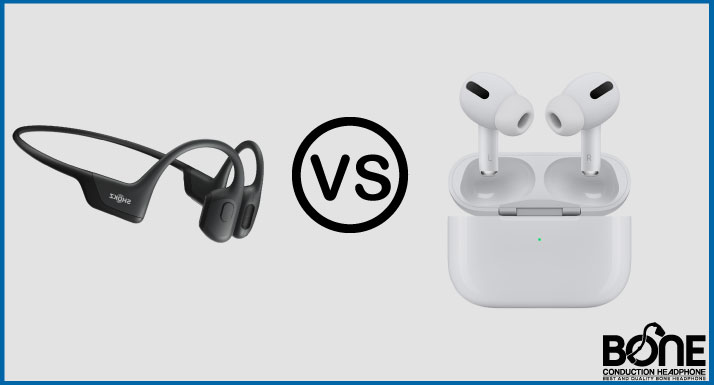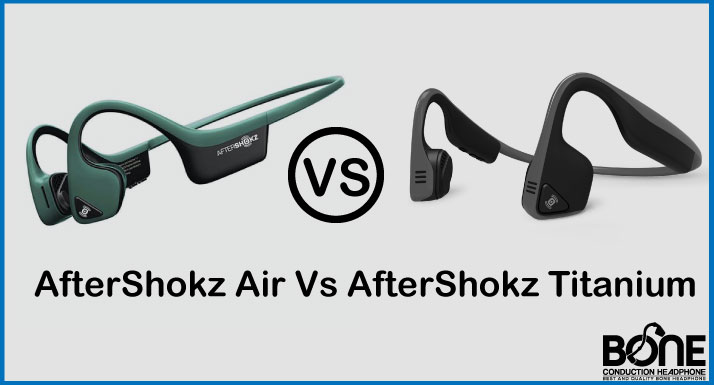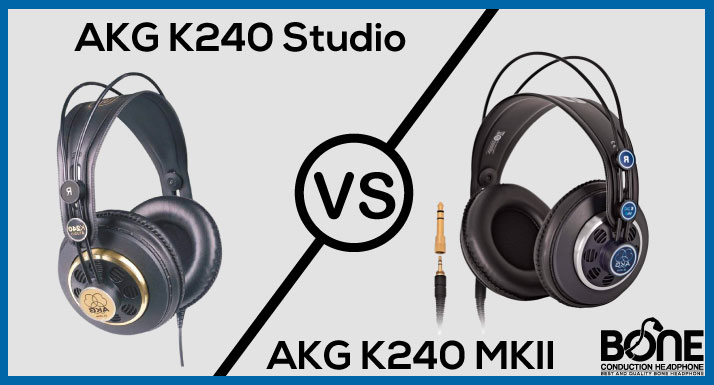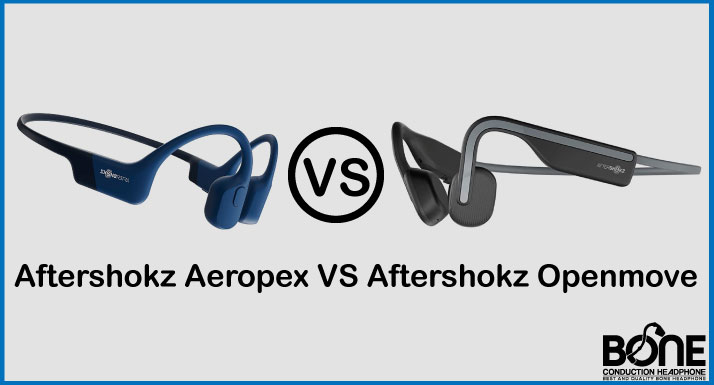Headphone manufacturer Grado Labs is located in Brooklyn and has its own style and methodology for making headphones. Grado SR60e and Grado SR80e headphones are among the most popular models in the Prestige Series.
Due to their relatively low price for open-back headphones, they have become popular and have an excellent retro design. However, with only $20 in price difference, the Grado SR80e costs just a little more than the Grado SR60e. These headphones’ design, construction, and features are so similar that choosing one can be tricky (which is probably why you are here).
[amazon box=”B00KYTNU9U,B00L1LXOWS” template=”table”]Grado SR60e vs. SR80e Comparison Chart
| Model | Grado SR60e | Grado SR80e |
| Weight | 0.37 lbs | 0.34 lbs |
| Length | 7.09″ | 7.09″ |
| Width | 6.69″ | 6.69″ |
| Height | 1.97″ | 1.97″ |
| Type | open-back design | open-back design |
| Transducer Type | Dynamic | Dynamic |
| Transmitter Required | N/A | N/A |
| Microphone | N/A | N/A |
| Driver Matched dB | 1dB | 1dB |
| Battery | N/A | N/A |
| Impedance | 32 Ohms | 32 Ohms |
| Operating Principle | Open Air | Open Air |
| OS Compatibility | Not OS specific | Not OS specific |
| Volume Control | No | No |
| Call/Music Control | No | No |
| Microphone Control | N/A | N/A |
| App Support | N/A | N/A |
| Bluetooth | N/A | N/A |
| Frequency Response | 20Hz – 20kHz | 20Hz – 20kHz |
| Analog Audio | Yes | Yes |
| USB Audio | No | No |
| Base/Dock | N/A | N/A |
| Sound pressure level | 99.8dB/mW | 99.8dB/mW |
| passive noise reduction | Yes | No |
| 3.5mm male connector | Yes | Yes |
| Warranty Period | 1 Year | 1 Year |
| over-the-ear form | No | Yes |
| material | plastic, polymer | plastic, polymer |
| headband | vinyl or something similar | vinyl or something similar |
| Color | Black | Black |
Grado SR60e and SR80e Descriptive Comparison
Design
Grado is renowned for its high-quality, handcrafted headphones made from metal, wood, and leather. Since they were founded, they have maintained a consistent old-fashioned retro style.
Grado SR60e
A Grado SR60e headphone is an on-ear type, meaning it doesn’t seal and cover the entire ear. Because of the open back, you can still hear outside noise, so you aren’t entirely unaware of your surroundings.
From the plug to the “Y” cable split, the headpiece is connected to a 6-foot cable. Since the wires are long and bulky, you cannot use them with portable devices. Ideally, these should be used within a room, connected to a computer, audio player, or other consoles.
The headphones have long enough cables to allow you to move freely within a room without removing them.
It is a very lightweight product of 3.15 x 6.69 x 7.48 inches in dimension and weighs 7.76 ounces or 0.48 pounds. As a result of its lighter weight, it is suitable for long-term wear and is very comfortable around the head.
Grado SR80e
The Grado SR80e is also an open-back headphone with an on-ear design. The aesthetics and measurements of the Grado SR80e are similar to those of the Grado SR60e. The exact dimensions of the device are 3.15 x 6.69 x 7.48 inches. With a weight of 0.51 lbs, it is slightly heavier.
It comes with the same durable 6-foot cable as the Grado SR60e. One of the best features of Grado’s wired headphones is their strong cable because it lasts longer and is not easily damaged.
There are almost similar in the quality of the ear foam, and they even come with the same mini-plug (3.5mm) and the same adapter (1/4″).
There are no accessories to look forward to with these two Grado models since the brand is straightforward and plug-and-use. Their upgrades primarily focus on better sound and technology rather than frills, keeping with their traditional audiophile roots.
[amazon box=”B00KYTNU9U,B00L1LXOWS” template=”table”]Build
The headband is made up of leatherette stitched around a solid metal bar and is much more durable than I expected. I have bent and flexed my headbands many times in numerous directions, and they remain as solid as they were when I first used them.
Aside from the sturdy headband, you won’t really find any nice design touches or quality materials. Plastic cups are attached to thin plastic clamps with little rods.
In addition, the cups are not equipped with any kind of stopper to prevent them from spinning endlessly around and tangling up the cord. It sounds like a squeaking sound when the rubber bits on top of the adjustment posts come into contact with the headband.
However, I developed a liking for the look and feel of these. Based on all the reports I’d read online about shoddy construction and broken attachment points, I expected these to feel like paper.
While not fancy or modern, their look has a simple industrial sensibility that I enjoy. These headphones are durable in just the right places. Obviously, I don’t recommend throwing them at brick walls, but for basic home use, they’re well built.
It is not possible to fold these down. It is not possible to detach the cable. To get these to fit correctly, you must bend and shape them. The only color option is black. Their style is the polar opposite of that of fashion headphones. Still, they are adequate for most purposes; sometimes, that’s all you need.
Comfort
Grado SR60e
Grado SR60e headphones offer moderate comfort. Due to their lightweight design, they don’t exert much pressure on your head.
Unfortunately, they aren’t well padded. Although the headband does not have padding, the lightweight design makes it less noticeable. However, the ear cup padding is made of a cushion-like material that feels uncomfortable against your skin and rips easily.
Grado SR80e
With the Grado SR80e, you can expect decent comfort levels. On-ear headphones are lightweight and don’t feel too tight on your head. The cushion-like covering on the earpads does not feel comfortable on the skin and tends to wear out very quickly. The headband has no padding, but since these headphones are lightweight, it isn’t a problem.
Controls
There are no in-line controls on these headphones.
Sound Quality
Even though both headphones may seem almost identical at first glance, their driver treatment is slightly different, resulting in different sound quality.
Grado SR60e
A full spectrum audio product, the Grado SR60e delivers excellent bass and midrange, emphasizing the full details of instruments and voices. You can listen to music from different genres with mid-range frequency headphones.
It’s also perfect for watching videos, movies, and anything with vocals.
Grado SR80e
Regarding driver treatment, the Grado SR80e has made some improvements. The bass is more profound, and the mid-range frequencies are better, which is evident when the volume is increased. Based on reviews, Grado SR80e is rated as having higher volume and frequency tolerance than Grado SR60e. Only sound enthusiasts will notice the difference, which the average listener won’t detect.
Bass
There is no comparison between Grado headphones and any other dynamic driver headphones I’ve ever tried, open back or closed back, as they sound entirely different. They’re initially confusing. Its bass response is natural, smooth, and has just enough oomph to add warmth to music where it is present.
Compared to other dynamic headphones, Grado headphones sound entirely different. These sounded so natural and pleasant on the low end, and it surprised me as I didn’t expect to hear any bass response at all.
Midrange
In terms of midrange accuracy, Grado is an excellent choice. Incredibly clear vocals and instruments are rendered by the midrange, which has a wonderful tone, texture, and feel. You usually won’t find such high-quality sound on such cheap headphones, but these are great for listening.
Treble
Some people are more sensitive to treble. These have a sharp treble that everyone will notice. There is boundless energy and power in the upper mids and treble, with random spikes and peaks that you’ll notice as soon as you listen to this music. In contrast to the Beyerdynamic range, you won’t get used to this kind of sound—what an intense, shocking, vibrant, brilliant piece of nonsense. There is probably no other headphone that should be balanced this way, but Grado went with it.
You’ll hear a sibilant, spiky mess if you listen to the wrong songs on high volume. However, the results can sometimes be magical if you listen to acoustic material and female vocals and don’t listen at high volumes.
This sound signature is an excellent example of how measurements don’t really matter and how sound is subjective. Every other headphone on the market fails to achieve this balance of smoothness and sharpness. They sound bright and annoying on some tracks and warmer and more “live” on others. “De-stressed” drivers on 80e models do help with this problem. The SR80e is just a bit warmer than the SR60e, making my ears feel less stabby, especially at higher volumes.
[amazon box=”B00KYTNU9U,B00L1LXOWS” template=”table”]Amplification
Since they have a 32-ohm impedance, you won’t need an amp, but you probably need something like an E10K. There will be plenty of power here with this amplifier, which is a great starter amp. To be precise, 200mW into an impedance of 32 ohms.
Noise Isolation
Grado SR60e
Grado SR 60e has poor isolation performance. Due to their open-back design, these headphones have poor noise isolation capabilities. There is very little isolation from external noise, and they are pretty transparent, except for a small build-up at 1kHz, which can color external sounds.
There is a poor leakage. The open-back design of these headphones results in a lot of sound leakage and loudness. Most leakage occurs between 200Hz and 20kHz, an extremely wide frequency range. With these headphones, there are a lot of leakages that sound loud, full, and present, so it could bother the people around you, even when you are listening at a moderate/low volume level.
Grado SR80e
Grado’s SR80e has poor isolation performance. This is normal for open-back headphones. Thus, they don’t provide any isolation in the bass and mid-ranges so that you can hear all the low rumbling noise from airplanes and buses and the chatter of people around you. During the treble range, where sharp sounds like S and Ts occur, they provide about 5dB of isolation, which is insufficient.
There is a poor leakage performance. Their open-back design is the reason for this. The midrange and treble ranges have a significant amount of leakage, which is quite a wide range. Their leakage is also very loud overall. 81dB SPL is the maximum leakage at one foot away when the music is at 100dB SPL, way above the average noise floor in a typical office.
Microphone
No microphone is included with the Grado SR80e.
Battery
No battery is required for these headphones because they don’t contain any active components.
App Support
No app or software allows you to customize these headphones.
Bluetooth
Grado SR60e
There is no Bluetooth connection on these headphones. You might want to look at the Grado GW100 if you’re looking for a similar design in a wireless format.
Grado SR80e
There is no Bluetooth connection with these headphones because they are wired. Consider the Grado GW100 Wireless if you would like a similar design in a wireless format. Due to the minimal latency of the wired connection, it is suitable for home theater use and gaming applications. Their relatively short cable may be a bigger issue for watching movies on your couch since they have a limited range.
[amazon box=”B00KYTNU9U,B00L1LXOWS” template=”table”]What Is In The Box?
Grado SR60e
- Grado SR60e headphones
- 1/8″ to 1/4″ adapter
Grado SR80e
- Grado SR80e headphones
- 1/8″ to 1/4″ adapter
You can read our review guides for:
Conclusion
The Grado SR60e is the clear winner in terms of value for money since there is no significant difference between them. The two headphones are difficult to distinguish if you are not an audiophile. It all comes down to how the user listens.
While the Grado SR60e provides excellent overall sound quality, the Grado SR80e has better mid-range and deeper bass. You won’t notice the difference unless you listen to music with different frequency ranges or at a higher volume. As a whole, the Grado SR60e is already considered to be a good buy.



![Beyerdynamic DT 770 vs DT 880 vs DT 990 [Detailed Guide]](https://www.boneheadphonesera.com/wp-content/uploads/2022/06/Beyerdynamic-DT-770-vs-DT-880-vs-DT-990.jpg)


![Razer BlackShark V2 vs Logitech G Pro X [Detailed Guide]](https://www.boneheadphonesera.com/wp-content/uploads/2022/07/Razer-BlackShark-V2-vs-Logitech-G-Pro-X.jpg)